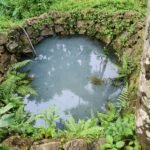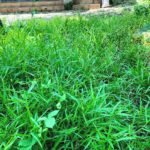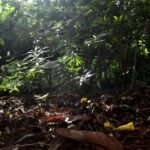Restoring degraded elephant habitats
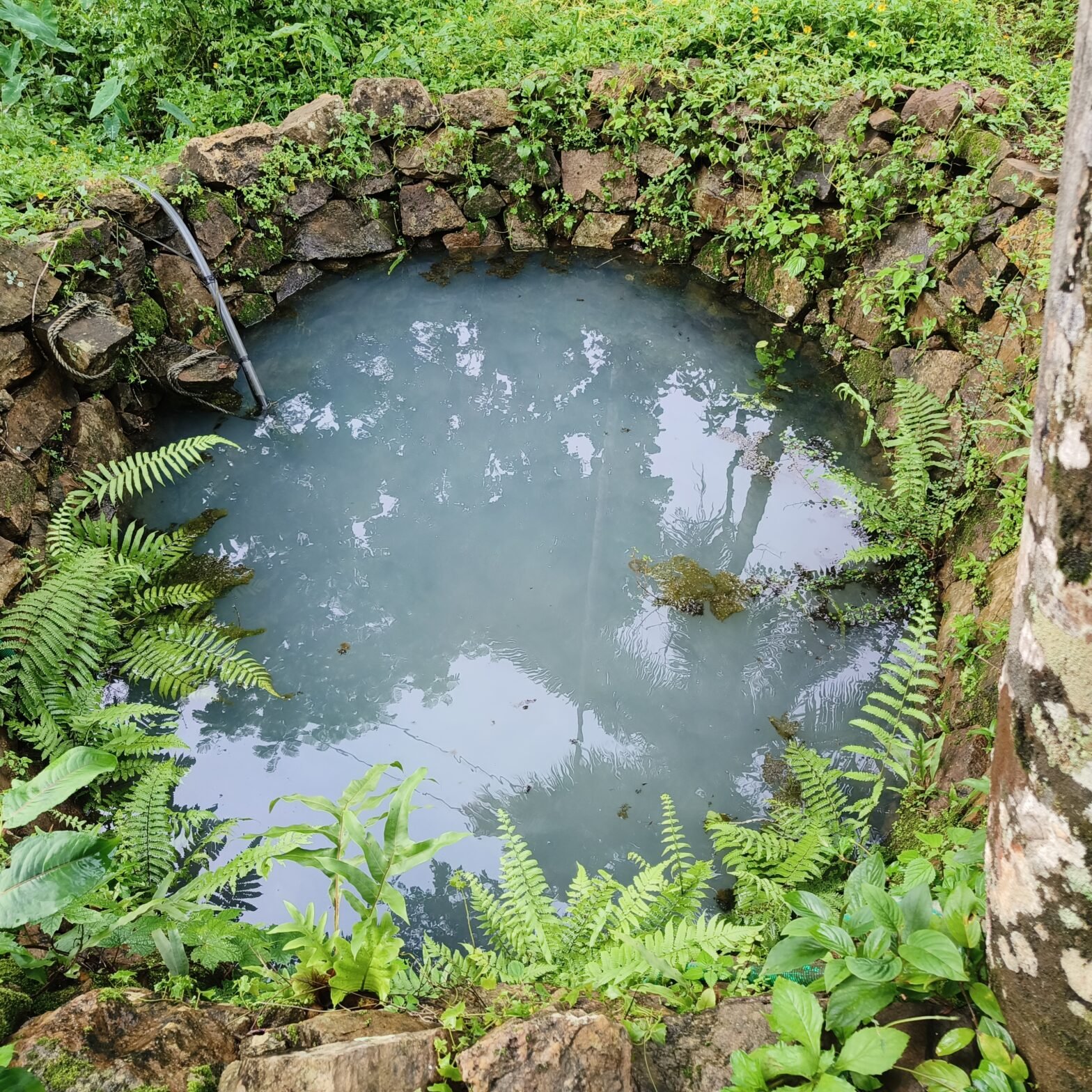
Forests: The mother of our rivers
Kabini, the only east flowing river that originates in the forests of Wayanad flows all the way into the Bay of Bengal as river Kaveri. Millions of people dependent on these rivers are also dependent on the forests of Western Ghats.
As for the people of Wayanad, the river is part and parcel of their daily existence. Every backyard “Thodu” (stream in Malayalam) has its origin in the local forests. A child wandering in the open field of Wayanad knows this stream to forest connection. A small “Thodu” that flows through my backyard continues to flow to this day when the locals stopped tree felling in the forest where this “Thodu” originates. There are several smaller water systems called the “Keni” that the Thodu keeps alive throughout the year. These are low lying waterholes with water available at the ground level. Two “Kenis” that originate on our private land supply water to atleast 5 homes downhill. Even though the “Thodu” shows signs of water depletion during summer, Keni is a water goddess that provides crystal clear water round the year. Water that flows out of the water tank is contaminated in that sense, whereas drawing water directly from the “Keni” is access to pure water – hence water for drinking and cooking goes straight from the “Keni” every day. People of Wayanad are truly blessed to have these backyard forests provide their water. And that’s why the place is Wayanad - “Vana naadu” or “Vayal naadu”, means “forest land” or “paddy land”.
Native trees of Wayanad are diverse. Some of these trees like ”Athi” (Ficus racemosa) indicate the presence of water underground and the tribes have this wisdom. Another “Manjakadamb” was seen growing naturally when a pond was dug on the land as if the tree knows to plant itself when a water body is formed. During a scorching summer, there are native trees that store water as if its belly is bulging with pure drinking water to supply to the thirsty passersby. Our education has not given us this wisdom that nature can provide. I wonder how the Murikku (Erythrina variegate) tree during its bloom attracts a diverse species of birds. A Vendekku tree (Lagerstromia lanceolata) went towering through all other trees to attract the bees – its white bark and small flowers attracted every living being standing beneath it. The trees are manipulating the pollinators to bring more seeds and diversity and in every sense the pollinators are the true builders of our forests. The Chadachi (Grewia tiliifolia) finds its way into the homesteads and coffee estates through bird droppings – not a single Chadachi has been planted by us, but the birds bring them generously for us to conserve. And under the Chadachi and Murikku you can find the Bird’s Eye Chilli plant popping out of its dispersed seeds finding its way into the chutney grinding stones of Wayanad kitchens.
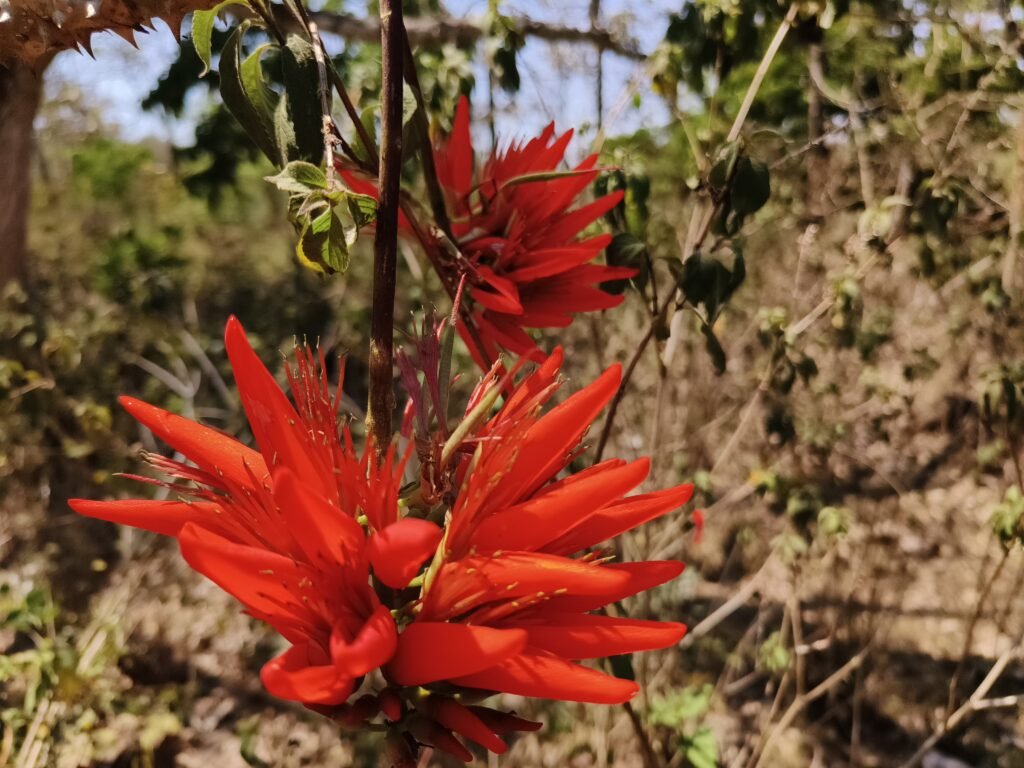
Disintegrated forest scapes
An epidemic study in Wayanad was clear about the connection of epidemics to the 62% deforestation of Wayanad from 1950-2018. The primary cause was a 1800% surge in plantations during the same period. The disintegration of these forests of Wayanad was evident in the maps. Elephants quietly navigated plantations several times to traverse between disconnected forests. They negotiated angry human minds with their calves during the night to reach the river. From a land of “Vana Naadu” where tribals co-existed with forests, the place was slowly turning into a hotspot of migrants with forest and wildlife intolerance. With the disintegrated forest scape, human ingress in the form of tourism meandered along the “Thodus” upstream into every forest of this pristine land. Night traffic through forests blared its bright lights on the beings that needed darkness and silence to procreate and feed. Humans were invading into the habitats of wildlife.
The “transformed green” hills
Native vegetation was altered with the plantation crops. Murikku that could attract pollinators were seen as a thorny unwanted tree. Athi that once adorned the coffee estates as indicator of water springs beneath was chopped mercilessly to make way for “more coffee”. Every available space in the coffee estate was either turned into coffee, pepper, silver oak, areca or a farm house that can attract tourism. The farmer who sought to monetize trees felled native species and planted exotic Silver Oaks from Australia. The “green” hills of Wayanad were slowly turning into a shade-averse exotic Silver Oak canopy that could neither support the hill slopes with its root structures nor enrich the soil with its acidic leaves. The land was slowly turning into a green without ecosystem services like pollination or water holding capacity. The green was as good as bare hills, eventually leaving the hills for denudation due to plantation crops. The Murikku that once adorned the pepper wines fell prey to the labour shortage that gripped the plantation sector.
As a society, we have a collective lack of appreciation for native breeds of any form. We failed to understand the importance of our native trees like Thambakam (Hopea parviflora), Irool (Xyla xylocarpa), Chandana Vembu (Toona ciliata) or the Vella Akil (Dysoxylum malabaricum). Scientific knowledge was gathering dust in the gloomy shelves of research institutes. The public was fairly unaware that they were felling the roots that could hold our soils from erosion during heavy rains. There is rampant tree felling in every part of Wayanad. Timber, resort, real estate, quarry, road proponents could lure some corrupt officials in the Geology, Village, Panchayats and Forest offices to fell all the old growths that once adorned these hills –outside forest lands. What was inside forest lands fell prey to encroachment and teak plantation. The rare, endangered and threatened (RET) high density species like Thambakam, Irool were chopped by the timber mafia buying these diamonds for paltry from the farmers of the hill slopes. The peanuts the farmers earned became the profits of the sawmills in export. The large buttress root structures of these deep-rooted old growth trees that once held our fragile hills were lost forever. The rains that pounded a few years later felt like revenge against the people who felled the old growths. The policies that made the farmers poor, manipulated the farmers into degrading the very ecosystems that they were dependent on. When local food crops like paddy earned paltry profits, resorts that served food from other states thrived!
An exotic invasive green
In the 1980s a new kind of green was introduced – it has spectacular flowers of yellow similar to our “Kanikonna” or the golden shower or Amlatas or Cassia fistula. This tree was Senna spectabilis from South America. Locals say a few trees planted outside the Muthanga range of the Wayanad wildlife sanctuary jumped borders. It has spread from 4.6 sq. km in 2013 to 123 sq. km in 2023 of Wayanad in Tholpetty and Muthanga ranges and spread to an unmeasured extent in the connected forests of Nagarahole, Bandipur and Muthumalai of the Nilgiris biosphere. This tree has largely colonized the erstwhile plantations within the forest lands. The high levels of allelopathy hinder the growth and establishment of native trees and grass. Absence of native grass reduces fodder for wildlife thus exacerbating the human animal conflicts in the region.
Dense Senna invasion areas do not harbor birds, bees and butterflies, the basic agents of pollination. These are silent patches inside the Wildlife Sanctuary used by elephants as pass through zones without anything to forage. Ungulates like deer and wild guar are found to avoid these dense zones. Our field journeys have given us the experience of these silent zones where wildlife and other critical ecological functions are completely absent. Absence of grass and ground cover exposes rocks thus indicating constant erosion of soil in dense patches of Senna.
Impact of Forest First Samithi’s habitat restoration
Forest First Samithi’s (FFS) is an NGO with 15 years of experience in land restoration and habitat conservation, working in alignment with UN SDG-15. FFS conserves degraded lands invaded by invasive species using various proven scientific techniques. In doing so, the organization has conserved a diversity of over 150 native and Rare, Endangered, and Threatened (RET) tree species of the Western Ghats. FFS operates in Wayanad, Nagarahole and Kodagu, in the primary catchments of the Kabini and Kaveri rivers.
Forest First Samithi’s tryst with habitat restoration in the forests of Wayanad began in 2020. An MoU with the Kerala Forest Department allowed us to work in the Tholpetty Range of Wayanad Wildlife Sanctuary. The area we have been working on is a critical elephant habitat and the land shares boundaries with the critical elephant corridor of Thirunelly-Kudrakote.
In the initial years, we spent our efforts towards the establishment of native flora. Quickly we worked towards complete uprooting of invasive Senna to ensure the native species that we conserve establishes. It was important to work on Senna uprooting on a given land before planting native trees. This journey empowered us to work with local communities in the forest fringes of Tholpetty Range.
Tribal youth from Kattunaykars (Particularly Vulnerable Tribal Group), Oorali Kurumbars, Paniyars earned their livelihoods through habitat restoration. From a small team of 22, we expanded to a 100 tribal restorers who are direct beneficiaries of the habitat restoration work. Apart from restoration, they are also nurturing native tree saplings that support an additional income. FFS stands as a guaranteed buyer of their native tree saplings. As of March 2025, an overall 58,000 native tree saplings of 80 species have been planted in the Senna eradicated areas of Tholpetty thus initiating a process of habitat recovery. These tree species are wild edible fruits, pollinator attracting, rare, endangered and threatened (RET), riverine species of Western Ghats. While Mr. Salim Pichan carefully selects species that are suitable for planting in Wayanad, MB Naik an expert in species of Western Ghats guides our local communities to do seed sprouting of native species.
Apart from the local community involvement, FFS through its consistent management of invasive infested areas, have been able to work on an overall 560 acres. As a careful strategy, FFS works on removing Lantana around naturally established trees thus preventing any risk of Senna colonization in Lantana opened up areas. More than 50,000 large, medium and small Senna trees have been uprooted from 338 acres by aiding the communities with effort-efficiency hand-held tools.
Mr. Anand A, a mechanical engineer has been volunteering his knowledge and skill to customize tools that can uproot Senna. He has been training the local communities annually on tool usage. His support to design and fabricate customised tools have improved productivity by 30% for Senna eradication.
Dr.Ganesh Babu and his team from FRLHT came forward to assess our methodologies in invasive management and submitted their initial findings in 2023 . It gave us the confidence to continue our invasive eradication at a larger scale.
A bird survey by Mr. Daniel Sukumardas has confirmed the establishment of 184 bird species in Senna eradicated plots. This is a clear indication of how the process of eradication is attracting the critical seed dispersers and pollinators to colonise. Those are sure signs of recovery where insectivorous birds are found to be the early colonisers.
Plant survey by Dr. Shrisha has shown how 15 palatable species of native grass and 34 species of herbs are naturally colonizing as we remove invasive Senna. This is a clear fodder establishment strategy of nature. Once the allelopathic roots of Senna are uprooted and made docile, nature brings native grass and herbs.
In March 2024, our model of Senna spectabilis eradication was recommended by the expert committee appointed by the Kerala High Court WP(C) 13204/2021 as a successful model to follow. This recommendation serves as a potential torch bearer for future policies to enable effective habitat restoration.
For us at FFS, the real reward is when a herd of elephants are seen foraging in the area where we eradicated Senna the previous year. We had Wild Gaurs visiting our eradication plots one day after removal. Dragon flies are seen all over the area while Senna is being uprooted. Nature recovers when given a chance. The hope is in the form of the tribal restorer teams who are trained and equipped to be part of the solution.
A pivotal grantor eco system
FFS journey has been made possible by our grantors and the Kerala Forest Department. Our work started small with individuals supporting small grants that have played a vital role in ensuring we continue our passion on the ground for conserving native/RET species. Sony Joseph, Neelam Ahluwalia, Shanthamma Havaligi, Dr. Meenakshi Bharath, Shaini Parikh, Ashok TA, Neethi C, Hemanth Naik and several others have been part of our amazing ecosystem of grantors supporting us through our journey. Individuals like Bharath A supported our work through his exceptional skill in designing our website and annual reports. He volunteered to be a part of our review team during impact assessments. Prof R Rajagopalan and Malathy Rajagopalan generously gave away their furniture to set up our field office at Tholpetty. These small drops in the ocean have got us in touch with many grantors who are interested in ecological restoration.
Dr. Anish Andheria, a wildlife biologist and ace photographer, has kindly shared his images for our website. His photographs bring visual impact to our restoration story.
We take pride in the volunteering effort of Mark Phillip based in the USA to help us develop a project management tool, a google form-based backend system. His promptness and skill to cater to our requirement has amazed our team in the abilities of the Gen alpha.
Individuals like Mrs. Vijaya Deepti PH played a significant role in supporting seed funding for setting up tribal owned nurseries and creating check dams during summers. Apart from supporting us financially over the years, she has also extended her vast experience in mentoring us for better preparedness for scaling up.
UST Global International Private Limited (UST) has been supporting this journey since 2021 supporting a 100 acre plot. Companies like Tata Industries Limited and Tata AIG General Insurance Company Limited worked with us over multiple years supporting about 50 acres each and being part of the initial years reviewing our processes and questioning our ways. They also supported our tribal restorers with Solar home lighting reducing the electricity bills by 50%. Tata Industries Limited represented by Tata Insights and Quants supported us beyond their grants with their senior leaders like S Raja volunteering in shaping our project proposals. Tata Insights and Quants also supported us by extending their team’s expertise in Power BI analytics tool to create meaningful information of the bird survey data.
Jointly Tata AIG General Insurance and Give India HDFC Parivarthan funds supported a Social Impact Assessment and Ecological Assessment studies that measured the impact of our work by independent agencies like GRAAM and Chanakya University.
Centre for Wildlife Studies have helped us eradicate Senna on a 3 km riparian buffer while joining hands with River Otter Conservancy in monitoring Otters outside forest lands in Kodagu under the leadership of Gopakumar Menon.
Give India Foundation through HDFC Parivarthan Small Grants Program gave us the much-needed support to prototype and experiment hand held tools while other grantors helped us with the livelihood support to use these tools to uproot Senna.
FFS is a proud winner of The Habitats Trust Grant of 2024 where our project was selected from 109 applications from all over the country. This grant gave us exposure to the various conservation efforts happening across India and brought the perspective of our work to the larger canvas of multiple critical ecosystems across the country while we continued to work on species conservation of RET and eradication of Senna/ Lantana.
In 2024, Buimerc India Foundation, an NGO based in Kochi came forward to support our work over multiple years. From a 35-acre plot in 2024, Buimerc’s support is expanding to cover an area of 100 acres in 2025. In 2024, Buimerc’s support enabled 2800 person days of livelihood conserving over 3200 native/RET trees of 50 species. This partnership has enabled us in testing out newer tools that would reduce the physical strain involved in our Senna uprooting process. The months of April to July are critical for our fieldwork on secondary Senna eradication and native species planting. CSR funds usually take time for realization and Buimerc India Foundation supported us in bridging this critical gap with timely disbursement of funds that we have been facing since the inception of our work.
Salesforce.com India Private Limited (Salesforce) has supported a 110-acre habitat restoration, aiding the process of conserving 12,000 native/RET trees and supporting 7100 person days of livelihood in Tholpetty. We were able to expand the team from 70 to 100 restorers with their support. In the year 2025, after FFS signed an MoU with Karnataka Forest Department, Salesforce has expanded its support between two locations of Wayanad and Nagarahole thus enabling our Wayanad restorer team to lead and train a new team inside Nagarahole National Park. Salesforce has supported in expanding our work at Tholpetty in one of the difficult terrains closer to the Valiyanaiketti river, a tributary of Kabini.
In 2024, Tata AIG General Insurance and Alabos jointly supported our bird survey in Senna uprooted areas. Buimerc India Foundation and Salesforce are supporting an ongoing Bird Survey, Plant Taxonomy study and Wildlife Monitoring in the Senna eradicated areas of FFS from 2020.
Grantors like Vincular Testing Labs India, Smarter Dharma Sustainable Solutions supported with native/RET species planting annually.
Mr. Ramesh Venkataraman of Junglescapes, an NGO working in Bandipur, has supported our work by recommending us to Salesforce funds which truly speaks of his unwavering contribution to alien invasive species transcending all boundaries.
Way Forward
FFS journey is possible only because of the support of the Kerala and Karnataka Forest Departments permitting us to work inside the protected areas and the ecosystem of grantors joining hands with us over multiple years. We hope to train communities for the future thus being the cog in the wheel where communities are skilled enough to support Forest Departments in their longer journey of invasive management.
Habitat restoration is a long journey where the fruits of restoration will be visible only after decades of working on the ground. Hope is in the local communities, forest departments and grantor ecosystems who can sustain work for posterity and restore our habitats to conserve our biodiversity.
Author
Meera Chandran is Co-Founder of Forest First Samithi and has been working in Wayanad, Nagarahole and Kodagu for over 15 years, conserving native/RET species and engaging with local tribal communities in habitat restoration.

